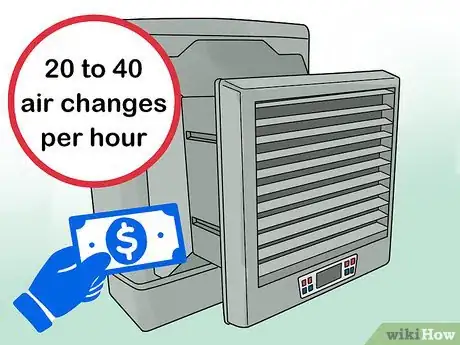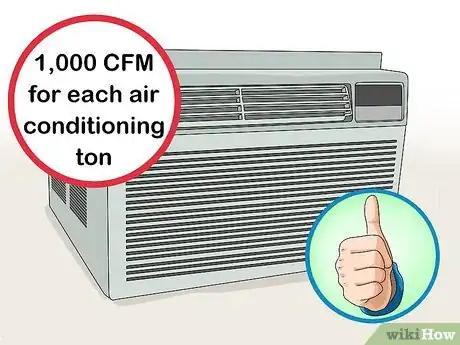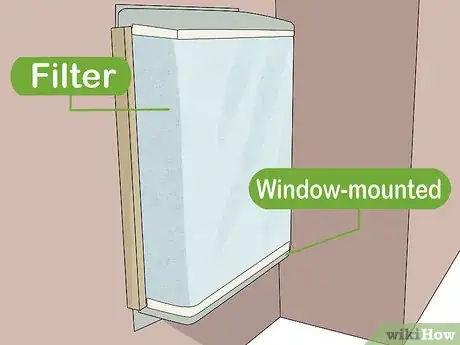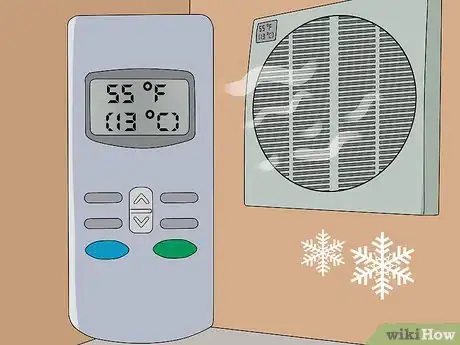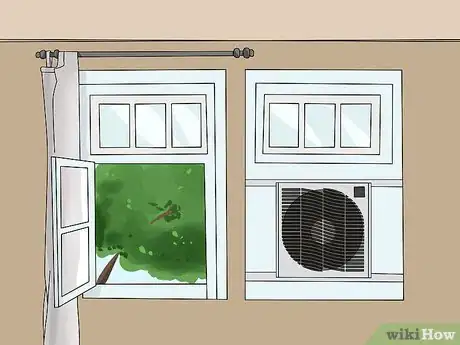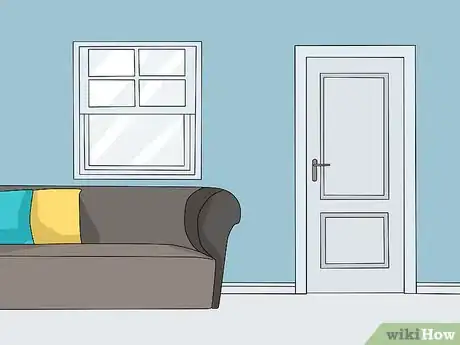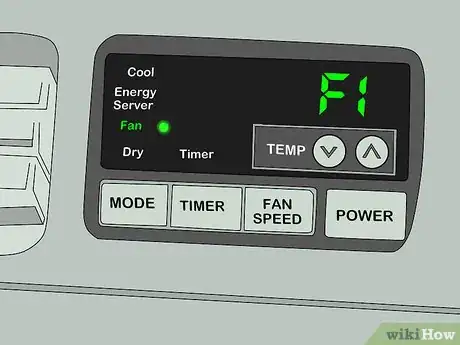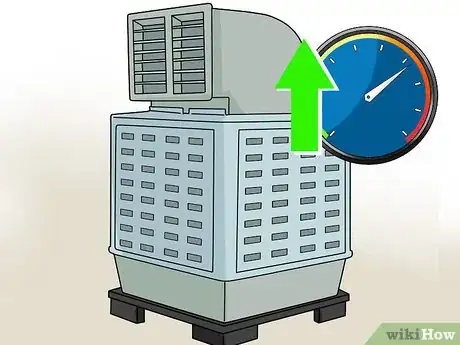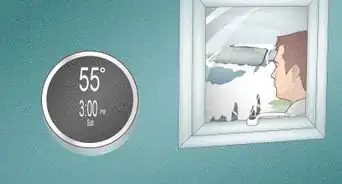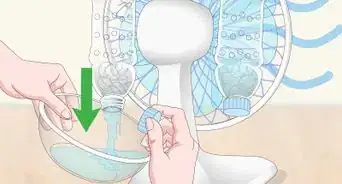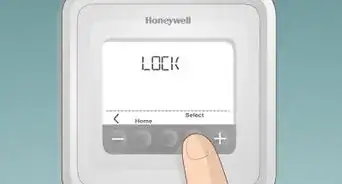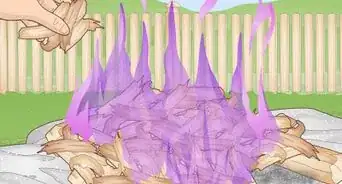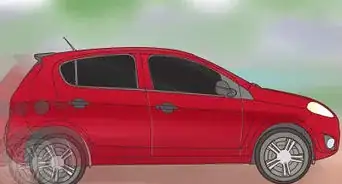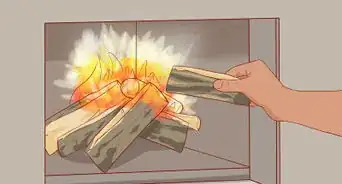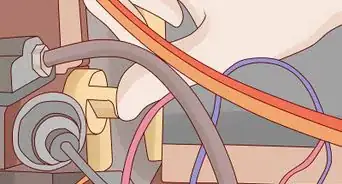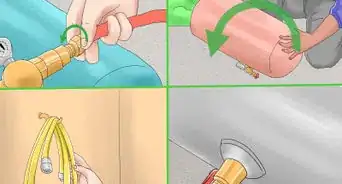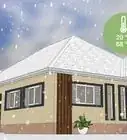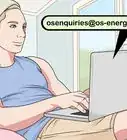This article was co-authored by Gevorg Grigorian. Gevorg Grigorian is an Appliance Repair Specialist and the Owner of G and R Appliance Repair in Los Angeles, California. With over 12 years of experience, Gevorg specializes in residential and commercial appliance repairs as well as heating, ventilation, and air conditioning (HVAC) services. Gevorg holds a BS in Business Administration and Management from California State University-Northridge.
There are 7 references cited in this article, which can be found at the bottom of the page.
This article has been viewed 39,792 times.
Swamp or evaporative coolers are a great way to cool down your home, especially if you live in a dry climate. Swamp coolers add water to the air to cool it down, raising the humidity in your home. They work best in dry climates. To use a swamp cooler, you first must pick the right one for your home. Then, you can use it as the weather gets warmer to cool your home.
Steps
Picking the Right Swamp Cooler
-
1Pick between window-mounted, roof-mounted, and ground-mounted. A window-mounted cooler fits in a window, much like an AC window unit. You can also install swamp coolers that cool the whole house on the roof or outside on the ground.[1]
- The advantage of a window unit is it is easy to install. However, it will only cool a room or two.
- A roof-mounted unit is more efficient, but it's also more difficult to install.
- The advantage of a ground-mounted version is you don't have to worry about your swamp cooler leaking through the roof. Also, this version is easier to perform maintenance on.[2]
-
2Buy a unit that can create 20 to 40 air changes per hour. With any cooling unit, you must get enough blowing power to cool your whole house. In swamp coolers, that power is measured in cubic feet per minute (CFM). You need to figure out the CFM required to get approximately 30 changes per hour. An air change is when all the air in your house has been circulated out once.[3]
- First, figure out the volume of your house. To figure out the volume, multiply your square footage by your inside ceiling height.
- Next, figure out the cubic feet per minute. Divide your volume by 2 to reach your CFM, which should be enough power to get 30 changes per hour.
Advertisement -
3Choose 1,000 CFM per air conditioning ton. If you're replacing an existing air conditioner with a swamp cooler, you should choose a bit lower CFM. The existing duct work won't be quite large enough for a swamp color, so you choose a less powerful option. In this case, pick 1,000 CFM for each air conditioning ton.[4]
- An air conditioning ton is a unit of measurement. It refers to how many BTUs of heat the air conditioner can remove in an hour.
-
4Add a filter to reduce dust. If you are worried about allergies, you can pick a unit with an air filter to help reduce incoming dust. Swamp coolers pull in outside air, so you may get allergens from the outside.[5]
Cooling with a Swamp Cooler
-
1Operate the cooler when the dew point is under 55 °F (13 °C). Swamp coolers work best when the humidity outside is relatively low, making the dew point low. You can check the dew point on most weather apps and weather websites.[6]
- The dew point is the temperature at which the water in the air is evaporating and condensing at the same rate. You want a lower dew point because swamp coolers work by evaporating water in the air to cool the room down. The lower the dew point, the lower you can cool. Typically, you can cool down the air to 20 degrees above the dew point temperature without your home getting too humid.
- You can also use a dew point calculator to calculate the dew point, such as this one: http://www.dpcalc.org/. You need to know the temperature and humidity.
-
2Let the air out by opening a window or two. For swamp coolers to work, you need to let air out at the same rate that the swamp cooler is blowing air in. That way, humidity won't build up in your house, making it seem warmer than it actually is. Though opening windows seems counter-intuitive, it actually helps your swamp cooler work better.[7]
- You'll need 1 to 2 square feet (0.093 to 0.186 m2) of open window space per 1,000 cfm, which is the unit's cooling capacity. You don't want to open them too far because that lets in hot air.[8]
- The other option for ventilation is installing grills to the attic, if your attic has ventilation.
-
3Close windows in areas you don't want to cool. To help direct the cool air where you want it, only open windows where you want the air to be cooler, as that will pull the cold air that direction. Keep the windows closed in areas you don't want to cool down.[9]
-
4Use the fan option when the weather is nice. If the weather is nice outside but your house is a little warm, you can use most swamp coolers as a house-wide fan. Pick the vent-only option to cool down your house with outside air.[10]
-
5Change the speed to your preference. Generally, swamp coolers have more than one speed. The higher speed will keep your home cooler, but the lower speed is more energy efficient. Pick the one that meets your needs.[11]
Expert Q&A
Did you know you can get expert answers for this article?
Unlock expert answers by supporting wikiHow
-
QuestionWhy did my swamp cooler stop working?
 Gevorg GrigorianGevorg Grigorian is an Appliance Repair Specialist and the Owner of G and R Appliance Repair in Los Angeles, California. With over 12 years of experience, Gevorg specializes in residential and commercial appliance repairs as well as heating, ventilation, and air conditioning (HVAC) services. Gevorg holds a BS in Business Administration and Management from California State University-Northridge.
Gevorg GrigorianGevorg Grigorian is an Appliance Repair Specialist and the Owner of G and R Appliance Repair in Los Angeles, California. With over 12 years of experience, Gevorg specializes in residential and commercial appliance repairs as well as heating, ventilation, and air conditioning (HVAC) services. Gevorg holds a BS in Business Administration and Management from California State University-Northridge.
Appliance Repair Expert
References
- ↑ http://www.greenbuildingadvisor.com/articles/dept/musings/saving-energy-evaporative-cooler
- ↑ https://www.nrel.gov/docs/fy01osti/29513.pdf
- ↑ http://www.greenbuildingadvisor.com/articles/dept/musings/saving-energy-evaporative-cooler
- ↑ http://www.greenbuildingadvisor.com/articles/dept/musings/saving-energy-evaporative-cooler
- ↑ https://energy.gov/energysaver/evaporative-coolers
- ↑ http://www.greenbuildingadvisor.com/articles/dept/musings/saving-energy-evaporative-cooler
- ↑ http://www.greenbuildingadvisor.com/articles/dept/musings/saving-energy-evaporative-cooler
- ↑ https://energy.gov/energysaver/evaporative-coolers
- ↑ https://energy.gov/energysaver/evaporative-coolers
- ↑ https://www.nrel.gov/docs/fy01osti/29513.pdf
- ↑ https://energy.gov/energysaver/evaporative-coolers
- ↑ Gevorg Grigorian. Appliance Repair Expert. Expert Interview. 30 July 2020.
- ↑ Gevorg Grigorian. Appliance Repair Expert. Expert Interview. 30 July 2020.
About This Article
Swamp or evaporative coolers are a great way to cool down your home and add water to the air, especially if you live in a dry climate. To use a swamp cooler, pick the right one for your home and use it when the weather gets warmer. Pick a window-mounted cooler if you want one that works more like an AC window unit, though you’ll only be able to cool 1 or 2 rooms. You can also get a roof-mounted cooler, which is more efficient but harder to install. A ground-mounted unit can also cool your entire house and is easier to maintain. Once you pick your unit, turn it on when the dew point is under 55 degrees Fahrenheit. This will allow the cooler to evaporate the water in the air to cool the room. To learn how to add a filter to your swamp cooler, keep reading!

